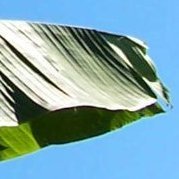Nakhon Sawan Mae Wong Dam would flood tiger habitat: activists
-
Recently Browsing 0 members
- No registered users viewing this page.
Announcements
-
Topics
-
Latest posts...
-
173
Why do so many Thai prostitutes marry their customers?
Yeah but it's over rated, some guys need to drag girls around, needy -
4
TM30 - real estate agent reports online, but you still need to go and report it yourself!!!
The TM.30 notification that was made for your arrival is obviously registered in immigration's database but for some unfathomable reason some, if not all, immigration offices ask for a new copy of that TM.30 notification with ever application of extension of stay. However, you mention "a new TM-30 receipt". Are you saying that the immigration office wants a new TM.30 notification to be made and wants a copy of the receipt for that new notification? That would be weird. -
9
Little Minds come from Minuscule Screens?: Ever wonder what's wrong with kids today?
No worries...because.... I am sure that you will NEVER be on my "ignore" list.... Thank you, by the way.... -
9
Little Minds come from Minuscule Screens?: Ever wonder what's wrong with kids today?
Don't let the little people get you down. I for one enjoy pub talk on the Pub sub forum. -
9
Little Minds come from Minuscule Screens?: Ever wonder what's wrong with kids today?
We are all agog waiting for your far more profound utterings. Please don't keep us waiting. Seriously, if someone doesn't know how to use the ignore function they only need to ask. Says something about posters that complain about other posters yet will not put them on ignore.......................... -
46
I just came back from the parole office I have to report to for the crime I committed.
We are talking about 90 day reporting which you can do online in 5 minutes -
323
BREAKING NEWS Biden lifts restrictions on Ukraine using US weapons to strike deep inside Russia.
So many armchair warriors on here that they could rustle up an AN mates company to volunteer in Ukraine. However I think they prefer mummy's basement to a trench on the front line. -
1
Donald Trump Jr. Alleges Biden’s Actions Could Trigger World War III Before Trump’s Return
What a load of codswallop. So Russia can continue to blast away at Ukraine from over the border AND employ soldiers from another country, but Ukraine dare not defend itself? Britain and France have both been calling for Ukraine to use their longer range missiles to help thwart attacks. Let the b’stards have it! If it were to provoke WWIII (which it won’t, they’ll threaten and threaten and wait for a Trump deal), then so be it… by sitting back, it’ll happen anyway.
-
-
Popular in The Pub
.png.3b3332cc2256ad0edbc2fe9404feeef0.png.8488ab72b8bb2e508209bfe3211b6e08.png)

.thumb.jpg.9bcb39176551b2c1639c71549f3782b4.jpg)




Recommended Posts
Create an account or sign in to comment
You need to be a member in order to leave a comment
Create an account
Sign up for a new account in our community. It's easy!
Register a new accountSign in
Already have an account? Sign in here.
Sign In Now